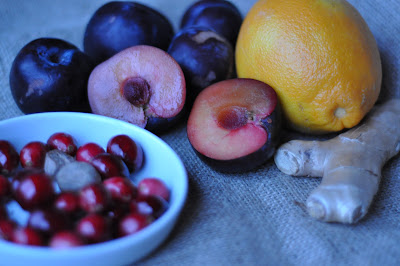 |
| We got a piano for Hanukah! |
 |
| Two nights down... |
Since there are still a few days left of Hanukah, and I've heard from a couple of people that they can't ever get their latkes quite right, I decided to pass on my humble knowledge of this famous fried food. I've also had Joe tell me he thinks I was born with a Jewish soul simply based on how well I cook traditionally cultural Jewish food even when I've never made it before, but I guess that's just his opinion.
There's really nothing worse than a mushy, soggy latke. Or one that falls apart in the pan and then just ends up in a million burnt shreds. Or one that's too dry because the potatoes were grated too fine.
In other words, there's a lot of ways to get them wrong. But I'm going to help you get them right, at least the way I do it. Your Bubbie may or may not approve.
 |
| Breaking my own rules: not enough onion :( |
There are a couple of key steps:
Grate the onion first. The juices from the onion will help keep the potato from browning as you grate it. I usually grate about 1/4 of a medium largish onion per 3 potatoes or so. And every 2-3 potatoes I mix the onion and potato shreds together to coat them all with that onion juice. Don't grate everything too fine or too big either, or your'll end up either with mush or with latkes that don't hold together at all.
 |
| Don't do your nails fancy before this: the fancy won't survive. |
Add the salt before draining. This helps release any excess juices from the potatoes, allowing you to really drain them well. This leads to the next step which is:
Drain the mix for longer than you think is really necessary, over a bowl. Start early, and let your shredded onions and potatoes drain over the bowl you will mix everything in for at least an hour. Every 20 minutes or so, go over there and really press the mix down into your colander to squeeze out that juice. Do it again right before you mix up the batter.
 |
| It doesn't look pretty right now, but whatev. |
Ditch the egg whites. They don't help bind all that much, and they have a lot of extra water content, which you just spent an hour getting rid of. Keep your whites though, to make meringues or for egg white omelets if that's your thing. Use two egg yolks when your recipe calls for one whole egg, or for every 3-4 potatoes.
Add extra stuff if you want, just keep the ratio of potato:onion:starch:eggs in mind. I like to add green onions, a little cheese, sometimes celeriac or apples, carrots or sweet potatoes. Mix it up and add different spices too. I've seen good recipes for samosa style latkes and dessert latkes, and even greek inspired ones served with tzatziki.
Get the oil good and hot before you start cooking, and don't be afraid to use quite a bit. If your pan starts to look dry between batches, add a bit more and reheat before adding more latkes.
Get messy. It's better if you can hand form your latkes: they'll be thinner and crispier than if you just drop a big glob in the pan. I take about a palmful of batter and form it into a disk, then drop it into the oil. After I've filled the pan (but not too many! You don't want them to be crowded or they'll just steam.) I go back and lightly press them down with my spatula.
Cook until golden brown and then flip, just once. If they start to burn before you think they're getting done inside turn the heat down a touch. But don't worry too much about raw insides because you can always finish them in the oven. If you flip them too many times they'll start to fall apart no matter how good your batter is.
Drain as you go, onto a paper towel lined sheet pan in a warm oven. They'll stay nice and crispy for long enough to fry up all the batter so everyone can sit down together.
 |
| Sweet Potato Latkes with Cardamom Applesauce and Mascarpone |




















































